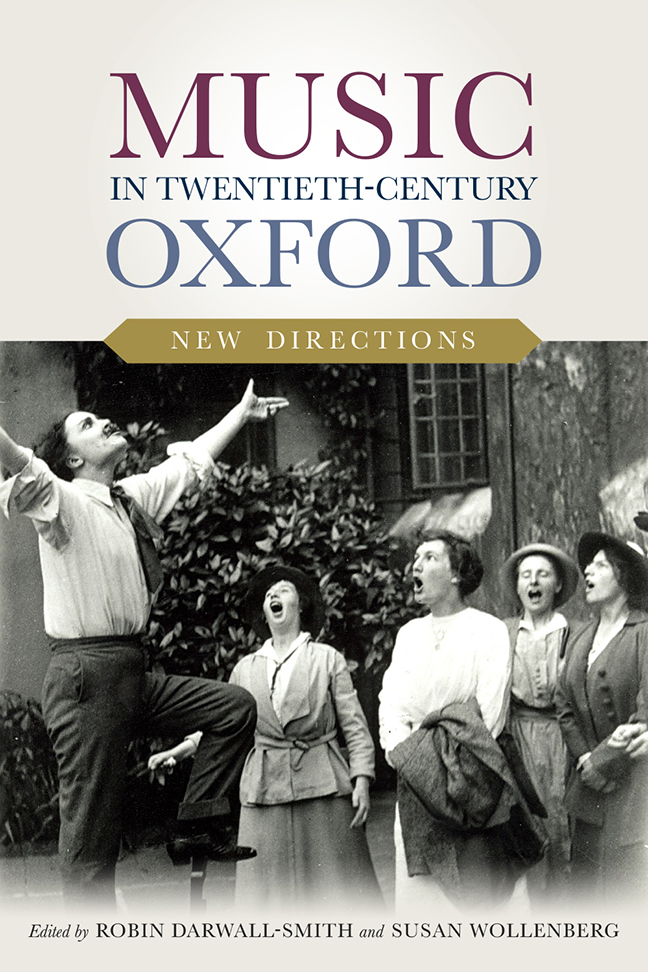2 - Music in the Town
Published online by Cambridge University Press: 09 January 2024
Summary
Musical life in twentieth-century Oxford featured a wide range of events and institutions beyond the confines of the university and its colleges, often interlinked with the ‘gown’ side. Percy Scholes, writing on ‘General Musical Life at Oxford’ during the MT century, warned: ‘The present account can give but a glimpse here and there of an ever increasingly active musical life, which reached its climax during the Allen Professorship and to recount which in a worthy completeness would enlarge too much the present volume’. In this chapter, we too give a ‘glimpse here and there’ of the active musical life sustained throughout the twentieth century in Oxford. In view of the kaleidoscopic nature of the topic, we take a variety of approaches to our material, with a special focus on local performing groups, visiting performers, and concert organizations. A common thread among the sections that follow is the interaction between town and gown.
Although ‘Oxford has no proper concert hall’, in the twentieth century the city was richly provided with auditoria, large halls, and other suitable spaces for musical use. Moreover, it boasts the first custom-built music room, the Holywell Music Room (opened 1748), noted for its ideal acoustic for chamber music, and for larger-scale events there was both the Sheldonian Theatre, the University's assembly room, associated with music from its inception in the late seventeenth century, and the Town Hall, opened in 1897 (Figures 2.1–2.2).
The ‘porous boundaries’ between town and gown mentioned in Chapter 1 are reflected in many examples of reciprocity. On the one hand, the Music Room at ‘Gunfield’, 19 Norham Gardens, home of the Deneke family associated with LMH, was used for concerts by groups including the Oxford Ladies’ Musical Society (OLMS, which became the Oxford Chamber Music Society), and George Thewlis's Oxford Madrigal Society (OMS), discussed further below. On the other hand, the St Aldate's Choral Society (see Chapter 4 on the choir) advertised its regular performance of Handel's Messiah at the church in 1927, with soloists ‘Miss Trueman, Miss Denne Parker, Mr. Edward Manning (Christ Church Choir), and Mr. Clotworthy (New College Choir)’, adding: ‘Any member of the University who knows the work and would care to sing is welcome to do so’. Other examples include the reciprocity between the Balliol Concerts and the OLMS in booking visiting performers (noted in Chapter 7).
- Type
- Chapter
- Information
- Music in Twentieth-Century OxfordNew Directions, pp. 9 - 30Publisher: Boydell & BrewerPrint publication year: 2023

